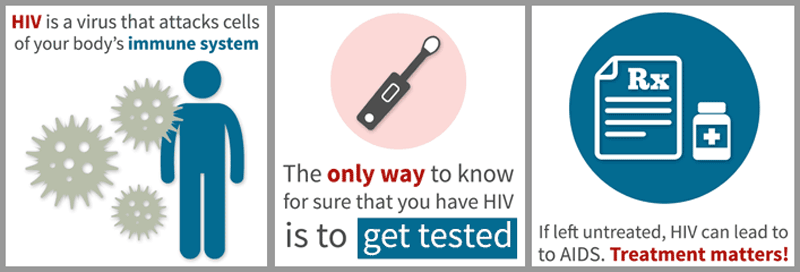HIV stands for Human Immunodeficiency Virus.
HIV is a retrovirus which is believed to cause AIDS. It destroys certain essential white blood cells, CD4 cells, the conductors of the immune system. Unlike some other viruses, the human body can’t get rid of HIV completely. So once you have HIV, you have it for life.
If left untreated, HIV reduces the number of CD4 cells (T cells) in the body, making a person more likely to get infections or infection-related cancers. Over time, HIV can destroy so many of these cells that the body can’t fight off infections and disease. These opportunistic infections or cancers take advantage of a very weak immune system and signal that the person has AIDS, the last state of HIV infection.
No effective cure for HIV currently exists, but with proper treatment and medical care, HIV can be controlled. The medicine used to treat HIV is called antiretroviral therapy or ART. If taken the right way, every day, this medicine can dramatically prolong the lives of many people with HIV, keep them healthy, and greatly lower their chance of transmitting the virus to others. Today, a person who is diagnosed with HIV, treated before the disease is far advanced, and stays on treatment can live a nearly as long as someone who does not have HIV.
AIDS stands for Acquired Immune Deficiency Syndrome
Acquired – The virus is acquired from someone else with the virus.
Immune – A protection against disease causing microorganisms.
Deficiency – A loss of this immune protection.
Syndrome – A group of signs or symptoms that together define AIDS as a human pathology.
So…AIDS is a deficiency that can happen as the result of prolonged and/or aggressive HIV infection. The Center for Disease Control and Prevention (CDC) defines the progression from HIV to AIDS as occurring when a person is either:
A) Infected with HIV and has a CD4 cell count of less than 200 or
B) Infected with HIV and 1 of 26 opportunistic infections or neoplasms. An opportunistic infection results when a normally benign “bug” such as bacteria or virus becomes pathogenic, recipe or harmful, in people with suppressed immune systems.
Rights of People with HIV/AIDS
- Quality medical treatment and social service entitlements without regard to sexual orientation, diagnosis, economic status, age, or race.
- Full and understandable explanations of all medical procedures and risks, choice of treatment modalities, choice to refuse research participation without jeopardizing treatment, choice to make informed decisions about one’s life.
- Privacy, confidentiality of condition and medical records, human respect, and to live and die with dignity.
Get Tested
The only way to know for sure if you have HIV is to get tested. Testing is relatively simple. You can ask your health care provider for an HIV test. Many medical clinics, substance abuse programs, community health centers, and hospitals offer them too. Email Ashley at: ashley@njbuddies.org for a FREE CONFIDENTIAL TEST appointment: Results in < 20 Minutes
PrEP
Find out if the 1 Pill per Day to PREVENT HIV is for you Email: eric@njbuddies.org for FREE CONSULTATION.
U=U “Undetectable Equals Untransmittable.”
“The science really does verify and validate U=U.”
Dr. Anthony S. Fauci, Director of NIAID, NIH at the United States Conference on AIDS, September 9, 2017
Undetectable=Untransmittable campaign tells us, “This is the moment we have been waiting for! The CDC agreed today there is ‘effectively no risk’ of sexually transmitting HIV when on treatment and undetectable. The overwhelming data clearly shows that taking our medication daily protects our health and our partners.“

